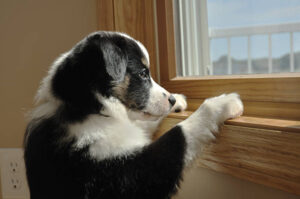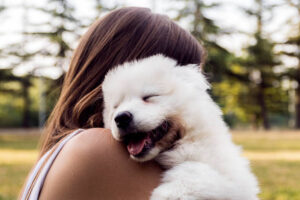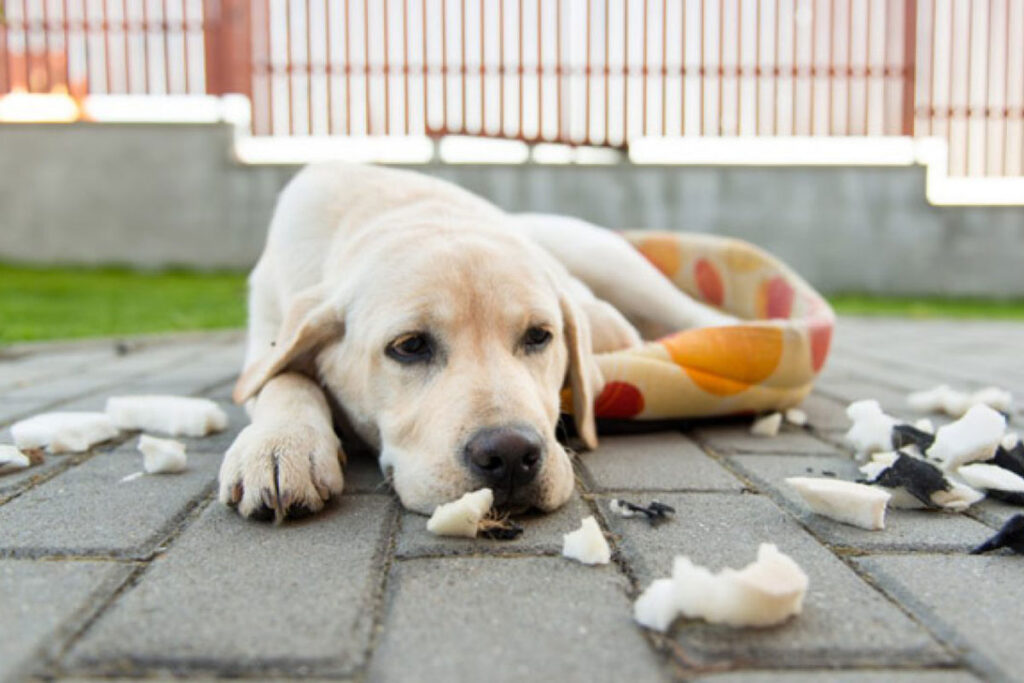During divorce and separation, major changes happen in the household for everyone – including your pet! While some pets are more resilient than others and will roll with the changes, others may experience genuine stress when a family member moves out or there’s a major disruption in routine.
Separation anxiety in dogs is more than just the occasional mournful whimper when you leave the house or the mysterious relocation of a bedroom slipper upon your return. Unlike a little mischief when your dog is left alone, separation anxiety is the result of real stress. If your dog exhibits some of these behaviors when you’re not there, he is most likely suffering from separation anxiety:

Excessive barking or howling
-
Destructive acts, like chewing furniture, pillows or clothing and frantic scratching on the doors or windows
-
Indoor ‘accidents’–urinating or defecting in the house
-
Excessive salivation, drooling or panting
-
Intense pacing
-
If crated, escape attempts so desperate, the dog may actually harm himself
It’s more likely these behaviors are due to separation anxiety if these behaviors happen every time you leave and only in your absence. In fact, they may begin even before you leave; when s/he sees you put on a coat or take out the car keys.
This is a condition that prompts a pet to exhibit distress and behavior problems when separated from his or her owner. It usually manifests itself immediately (or within 30 minutes) of an owner’s departure.
People often mistake boredom for separation anxiety because both are accompanied by problem behaviors, such as destructive chewing and excessive barking. The difference is that boredom can be overcome by adding more exercise and mental stimulation to your dog’s routine. These actions have little or no impact on separation anxiety.
It’s difficult seeing a beloved pet under stress and just as difficult to come home to mayhem and destruction. While there’s no magic bullet, there are some things you can try.
Change Your Routine: Most people have a routine they follow before they leave the house: shower, dress, put on a coat, grab keys, walk out the door. Once your canine has recognized your routine, its anxiety can start building from the first step. This means anxiety doesn’t just begin when you walk out the door but may start when your alarm clock goes off or you turn on the shower. Your pet’s anxiety may continue to escalate throughout the morning as you engage in your typical routine. By the time you leave the house, your dog may already be in a full-blown panic.

To prevent this mounting anxiety, make some changes to your own behavior. Pay attention to the things you do before you leave the house and begin doing them randomly throughout the day. For example, you can grab your keys and sit down to watch television or put on your coat and feed your dog. Within a few weeks, your dog should no longer see these your activities as connected signs you’re about to leave, and some of the anxiety should be eased.
If he’s a puppy, start conditioning her early by leaving her for short periods of time and gradually lengthening the amount of time you’re gone. Some dogs feel safer and more comfortable in their crate when left alone. Watch her behavior in the crate to see if she settles right down or if the anxiety symptoms ramp up.
Exercise: Make sure he gets plenty of exercise, both physical and mental. A tired, contented dog, who’s had a brisk walk and playtime with you is more likely to settle down when you leave.

Medication: Sometimes, no amount of training and conditioning will help, especially with older dogs. Some vets recommend medication like amitriptyline, which is used to treat depression, or alprazolam, which is prescribed for anxiety and panic disorders.
Herbal & homeopathic treatments: Another option is natural supplements and homeopathic treatment. Natural supplements that help ease anxiety in dogs include the amino acid L-theanine, chamomile, passionflower, St. John’s Wort and valerian. These basically function to alter neurotransmitters in the brain (such as serotonin, GABA, or dopamine) to induce a sense of peace and calm.
Separation anxiety isn’t always preventable, despite your best efforts. But with patience and care, you may be able to reduce your dog’s suffering and the destructive behaviors it causes.
For an in-depth guide on teaching your pet to dissociate these cues from your departure, follow the ASPCA’s guide.



